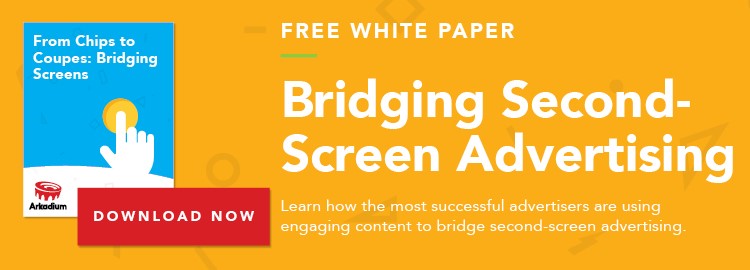4 Reasons Publishers Need to Use Content Personalization

Let’s face it: modern users expect their media to be custom tailored to their individual tastes.
Survey data from Cxense found that 69% of publishers do not personalize their web pages, even though 81% believe data is critical for success.1 Yet, according to Janrain, 74% of online consumers get frustrated when digital content has nothing to do with their interests.2
Part of the problem publishers face with personalization is the sheer size of the digital ocean. Large publishers such as Bloomberg LP produce tens-of-thousands of original pieces of content with their 2,500 reporters, plus 1.2 million additional pieces of content from aggregated outside sources. Knowing what to measure and how to glean meaning from it is a difficult task.
What’s more, cross-device usage makes it difficult to understand the entire user journey and experience, leading to data gaps.3
Despite these challenges, some publishers including The New York Times and The Washington Post have invested in and successfully developed contextual engines with personalization and data capabilities. Here’s why it’s worth all the trouble.
Content Personalization Increases User Engagement
According to a study by Evergage, 73% of digital companies who employ real-time personalization saw significant increases in user engagement leading to increased time-on-site and lower bounce rates.4 As Alexander Spangher, a New York Times data scientist wrote in Building the Next New York Times Recommendation Engine, “We want to provide the most relevant news and information to our readers so they stay longer and read more. A recommendation engine is part of [our] strategy to engage readers.”5
Content Personalization is Expected
Amazon. Netflix. Google. All are kings of personalization who, with their sheer breadth and depth, have come to shift users’ expectations. Not surprisingly, as detailed earlier, the vast majority of users get frustrated when the content they consume does not match their interests.
The case is even stronger for subscriptions sites. According to Steve Schifferes from City University London, “A lot of personalization is something that people would expect if they’re paying for sites, and something that might encourage them to end up subscribing to sites.”6
Content Personalization Increases Monetization
Sure, personalization leads to more time spent on the site, which means the user is exposed to more ads.
But the user data accumulated to serve personalized content has another powerful use: by understanding who your users are–including what they like and engage with—it’s possible to match readers with advertisers. Indeed, this is far more lucrative than standard programmatic digital advertising.7
Learn how attention metrics can also increase monetization.
Content Personalization Increases Shareability
According to Sean Clarke, the head of interactives at the Guardian, “Personalization helps to boost the shareability of content, with users not just sharing, but adding their personal slant on the story.” And with shareability come an increase in traffic.
Case in point: the New York Times’ “How Y’all, Youse and You Guys Talk” quiz, which was their most popular piece of content in 2013. Not only did it—or perhaps because it did—check the engaging and personalizing boxes, it was shared across every social media platform that exists, bring in troves of users.8
The lesson is that content personalization is a requirement of the modern user experience.
Even The Future Today Institute, a researcher of emerging technologies, predicts algorithmic curation as one of 2016’s major trends. The time is now for publishers to develop and implement their own personalization engines.9
1 “NEW SURVEY: DIGITAL PUBLISHERS FAIL TO PERSONALIZE CUSTOMER EXPERIENCE DESPITE THE CRITICAL BUSINESS IMPACT.” Cxense. N.p., 12 Nov. 2015. Web. 4 Apr. 2016.
2 “Online Consumers Fed Up with Irrelevant Content on Favorite Websites.” Janrain. N.p., 31 July 2013. Web. 13 Apr. 2016.
3 Moses, Lucia. “5 Things Holding Back Personalized Content.” Digiday. N.p., 27 Feb. 2015. Web. 1 Apr. 2016.
4 “Trends & Priorities in Real-Time Personalization.” Evergage. Evergage, Dec. 2015. Web. 4 Apr. 2016.
5 Spangher, Alexander. “Building the Next New York Times Recommendation Engine.” Open Blog. The New York Times, 11 Aug. 2015. Web. 8 Apr. 2016.
6 Bartlett, Rachel. “How News Sites Are Boosting ‘Stickiness’ with Personalization.” Journalism.co.uk. N.p., 23 Oct. 2013. Web. 19 Apr. 2016.
7 Levin, Jonny. “Review of New York Times’ Personalization – Future NYT.”Future NYT. N.p., 7 May 2015. Web. 19 Apr. 2016.
8 Whittier, Coy. “How The New York Times Used an Online Quiz to Rule the Internet.” Boombox How The New York Times Used an Online Quiz to Rule the Internet Comments. N.p., 20 Nov. 2015. Web. 19 Apr. 2016.
9 2016. S.l.: De Gruyter, 2016. Future Today Institute. Webbmedia Group, 2016. Web. 8 Apr. 2016.


